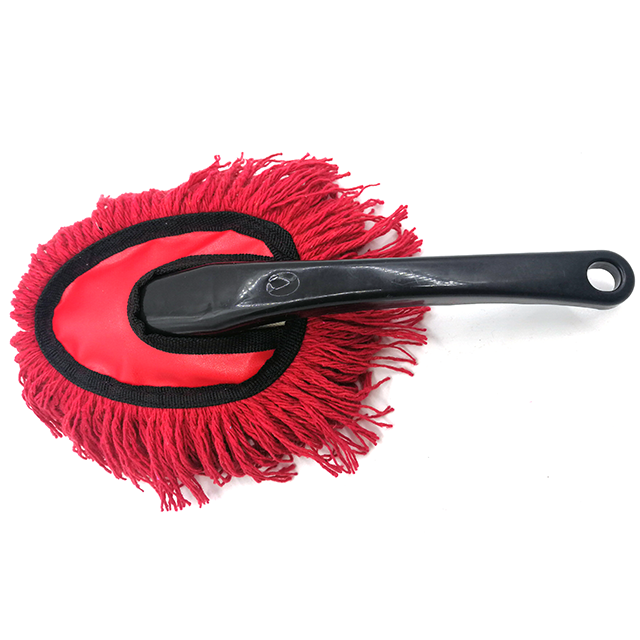
- English
- Español
- Português
- русский
- Français
- 日本語
- Deutsch
- tiếng Việt
- Italiano
- Nederlands
- ภาษาไทย
- Polski
- 한국어
- Svenska
- magyar
- Malay
- বাংলা ভাষার
- Dansk
- Suomi
- हिन्दी
- Pilipino
- Türkçe
- Gaeilge
- العربية
- Indonesia
- Norsk
- تمل
- český
- ελληνικά
- український
- Javanese
- فارسی
- தமிழ்
- తెలుగు
- नेपाली
- Burmese
- български
- ລາວ
- Latine
- Қазақша
- Euskal
- Azərbaycan
- Slovenský jazyk
- Македонски
- Lietuvos
- Eesti Keel
- Română
- Slovenski
- मराठी
- Srpski језик
What are the advantages of using a cordless Multi-function Dust Duster?
2024-10-03

What are the capabilities of the dust duster?
The multi-function duster comes with a collection of features, including multiple attachments capable of cleaning different surfaces. The device has a powerful suction that can collect all types of dust and dirt in the least amount of time. It also comes with a washable filter that cleans the airflow, making the device more efficient.Is the duster rechargeable?
Yes, it is, the duster is cordless, which means it is rechargeable and uses a lithium-ion battery. The battery is long-lasting, thus offering long service life.What surfaces can the duster clean?
The multi-function duster can clean virtually any surface in the house, car, or office. It comes with additional attachments customized to enable cleaning different surfaces like bookshelves, cars, keyboards, etc.What is the importance of using a multi-function dust duster?
One of the leading benefits of using a multi-function dust duster is that it reduces the cleaning time and effort that the traditional hand-held cleaning tools require. The device is also cordless and lightweight and can be used for extended periods without straining the wrist. In summary, the multi-function dust duster is an excellent tool that makes cleaning easier. Its unique features make it the perfect device to help you keep your home, car, or office dust-free. Ningbo Haishu Aite Housewares Co.,Ltd. is a company that specializes in the manufacture of cleaning products. We provide excellent cleaning products customized to meet our clients' needs. Contact us today via sales5@nbaiyite.cn to get your multi-function dust duster and other cleaning products. Visit our website at https://www.aitecleaningproducts.com for more information.Here are ten scientific articles relating to dust cleaning:
Akkanen, J., et.al. (2012). "Untreated wastewater sample analysis by liquid chromatography–photodiode array detection–tandem mass spectrometry (LC–PDA–MS/MS) and by gas chromatography–mass spectrometry (GC–MS)". Journal of Chromatography A, 1269, 109-118.
Alvarez, P. J. J., & Vogel, T. M. (2011). "Substrate interactions of benzene, toluene, and para-xylene during microbial degradation by pure cultures and mixed culture aquifer slurries". Environmental Science & Technology, 45(6), 2411-2417.
Borresen, T., et.al. (2011). "Capacitive sensor arrays for the identification of chemical and biological species". Electrochimica Acta, 56(16), 5676-5682.
Choi, K., et.al. (2011). "Comparing estrogenicity of estrone and 17beta-estradiol using four in vitro assays". Ecotoxicology and Environmental Safety, 74(6), 1683-1690.
Dheilly, R. M., et.al. (2012). "Induction of antiviral immunity by small RNAs". Proceedings of the National Academy of Sciences, 109(7), 2632-2637.
Ding, C., et.al. (2012). "Selective isolation and detection of Cu2+ and Cd2+ from aqueous solution using protein-modified magnetic nanoparticles". ACS Applied Materials & Interfaces, 4(12), 6690-6697.
Leknes, H., et.al. (2011). "Uptake and distribution of anthracene in hyphae of Arbuscular mycorrhizal fungi". Environmental Science & Technology, 45(8), 3286-3292.
Okamoto, Y., et.al. (2011). "Production of R,R-2,3-butanediol from diacetyl by Klebsiella oxytoca KB1 and Bacillus pumilus ATCC 14884". Journal of Bioscience and Bioengineering, 112(4), 383-388.
Perez S, et.al. (2011). "Occurrence of emerging pollutants in urban wastewater and their removal through biological treatment followed by ozonation". Water Research, 45(2), 580-588.
Stovall, K., et.al. (2012). "Determination of lipid hydroperoxides in human serum by multiple stable isotope dilution assay–mass spectrometry and liquid chromatography–mass spectrometry". Journal of Chromatography B, 883-884, 60-66.


